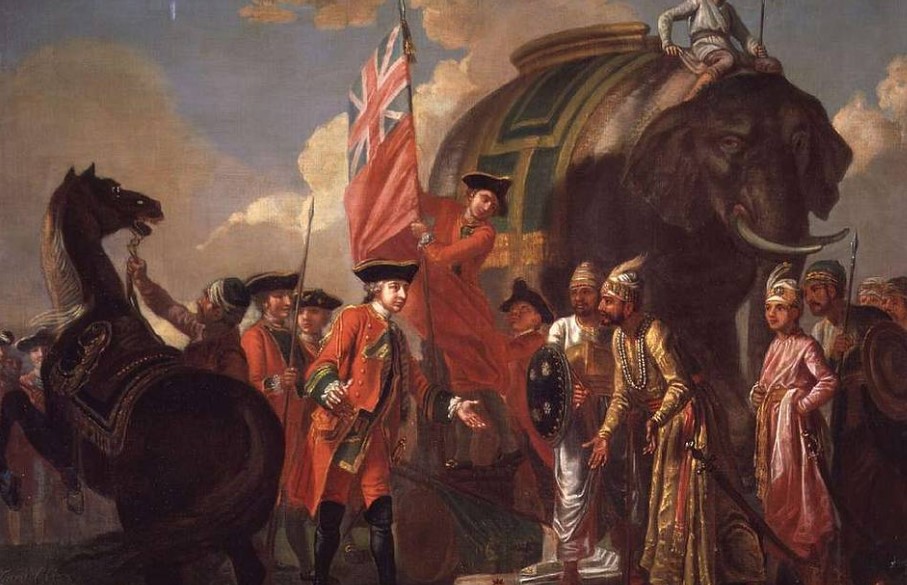
Modern History MCQs – 1 (Arrival of Europeans in India)
Most important multiple choice questions from the chapter – Arrival of Europeans in India MCQs.
Home » UPSC Study Materials » Prelims Express » Chapterwise MCQs » Modern History MCQs » Modern History MCQs – 14 (Civil Disobedience Movement)
Civil Disobedience Movement MCQs with answers and explanations for UPSC and Other examinations.
1. At which Session of Indian National Congress, Working committee of Congress was authorized to launch a programme of Civil Disobedience ?
(a) Bombay
(b) Lahore
(c) Lucknow
(d) Tripura
Correct Answer – (b) Lahore
2. Which one of the following movements began with the famous Dandi March ?
(a) Home Rule Movement
(b) Non-Cooperation Movement
(c) Civil Disobedience Movement
(d) Quit India Movement.
Correct Answer – (c) Civil Disobedience Movement
3. Similar to the Dandi March, a salt march was started by who among the following in Tamil Nadu ?
(a) Jawahar Lal Nehru
(b) Subhash Chandra Bose
(c) Sarojini Naidu
(d) C. Rajagopalachari
Correct Answer – (d) C. Rajagopalachari
4. Consider the following statements about Civil Disobedience Movement :
1. It started with the famous Dandi March.
2. Women did not participate in the Civil Disobedience Movement.
Which of the above statements is/are correct ?
(a) 1 only
(b) 2 only
(c) Both 1 & 2
(d) None of the above
Correct Answer – (a) 1 only
5. Which among the following events was first to occur ?
(a) Dandi March
(b) Quit India Movement
(c) Arrival of Simon Commission
(d) Gandhi-Irwin Pact
Correct Answer – (c) Arrival of Simon Commission
6. A volunteer organization known as ‘Khudai Khidmatgar’ was founded by who among the following ?
(a) Khan Abdul Gaffar Khan
(b) Muhammad Ali Jinnah
(c) Maulana Azad
(d) None of the Above
Correct Answer – (a) Khan Abdul Gaffar Khan
7. After the failure of Civil Disobedience movement, Gandhiji gave importance to which among the following :
(a) Constructive programmes
(b) Limited use of violence
(c) Negotiation with British
(d) None of the above
Correct Answer – (a) Constructive programmes
8. Consider the following statements about Gandhi-Irwin Pact :
1. It was signed by Mahatma Gandhi and the then Viceroy of India, Lord Irwin.
2. It discontinued the Civil disobedience Movement.
Which of the above statements is/are correct ?
(a) 1 only
(b) 2 only
(c) Both 1 & 2
(d) None of the above
Correct Answer – (c) Both 1 & 2
9. Who among the following presided over the Karachi Session of the Indian National Congress in 1931 ?
(a) Jawahar Lal Nehru
(b) J.M. Sengupta
(c) S.C. Bose
(d) Vallabhbhai Patel
Correct Answer – (d) Vallabhbhai Patel
10. Arrange the following events in the chronological order :
1. Second Round Table Conference
2. Karachi Session of Indian National Congress
3. Execution of Bhagat Singh
4. Gandhi-Irwin Pact
Select the answer using the codes below :
(a) 1, 2, 3, 4
(b) 2, 3, 1, 4
(с) 4, 3, 2, 1
(d) 3, 4, 2, 1
Correct Answer – (с) 4, 3, 2, 1
11. Consider the following statements about Round Table Conferences :
1. Ramsay MacDonald presided over the first Round Table Conference.
2. Indian National Congress did not attend any of the Round Table Conferences.
Which of the above statements is/are correct ?
(a) 1 only
(b) 2 only
(c) Both 1 & 2
(d) None of the above
Correct Answer – (a) 1 only
More questions are coming soon. Join us on Whatsapp for latest updates: Join CivilsCracker on Whatsapp

Most important multiple choice questions from the chapter – Arrival of Europeans in India MCQs.

Most important multiple choice questions from the chapter – Battle of Plassey and Battle of Buxar MCQs.

Most important multiple choice questions from the chapter – Social and Religious Reform Movements MCQs.

Most important multiple choice questions from the chapter – Anglo Mysore Wars and Anglo Maratha Wars MCQs.

Most important multiple choice questions from the chapter – Governor Generals of India MCQs.

Most important multiple choice questions from the chapter – Revolt of 1857 MCQs.

Most important multiple choice questions from the chapter – Organizations before Indian National Congress MCQs.

Most important multiple choice questions from the chapter – Important Sessions of Indian National Congress MCQs.

Most important multiple choice questions from the chapter – Partition of Bengal and Swadeshi Movement MCQs.

Most important multiple choice questions from the chapter – Surat Split and Lucknow Pact MCQs.

Most important multiple choice questions from the chapter – Arrival of Gandhi and Jallianwala Bagh Massacre MCQs.

Most important multiple choice questions from the chapter – Khilafat and Non Cooperation Movement MCQs.

Most important multiple choice questions from the chapter – Simon Commission and Nehru Report MCQs.

Most important multiple choice questions from the chapter – Communal Award and Poona Pact MCQs.

Most important multiple choice questions from the chapter – Individual Satyagraha and Cripps Mission MCQs.

Most important multiple choice questions from the chapter – Quit India Movement MCQs.

Most important multiple choice questions from the chapter – Indian National Army and Royal Indian Navy Mutiny MCQs.

Most important multiple choice questions from the chapter – Cabinet Mission and Formation of Constituent Assembly MCQs.

Most important multiple choice questions from the chapter – Independence and Partition of India MCQs.
We are adding new Notes, Chapterwise MCQs, Quizzes, Previous Years Questions everyday
We are adding new Notes, Chapterwise MCQs, Quizzes, Previous Years Questions everyday